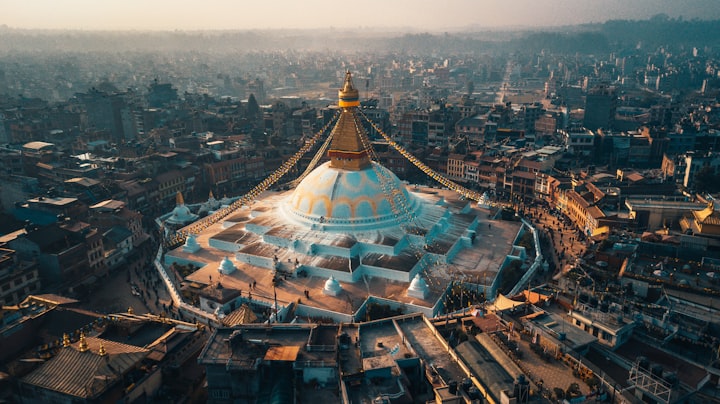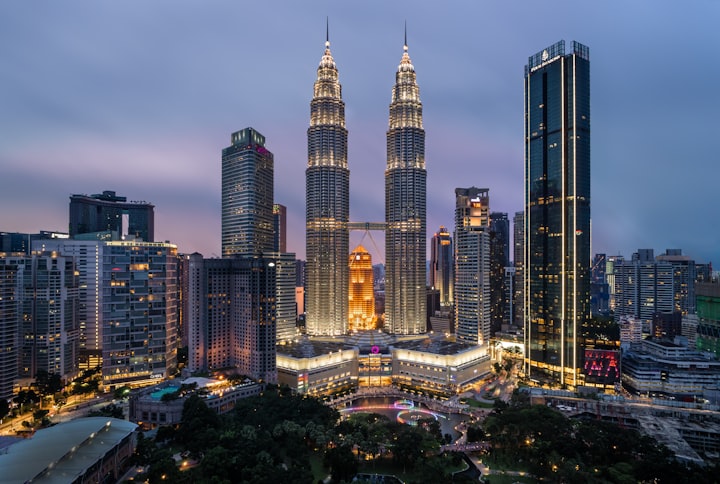The Best Time for Trekking in Nepal: What Every Season Offer
Discover the best time for trekking in Nepal and get insights into each season and their specialities.

The Geographical Introduction of Nepal
Nepal is a Himalayan country in the Indo-Gangetic Plain. It is a landlocked country, occupying 0.03% of the total land. It is between latitudes 26° 22′ and 30° 27′ north and longitudes 80° 4′ and 88° 12′ east. India lies to the east, west, and south, with the Autonomous Region of China lying to the north.
As it lies on the southern slopes of the Himalayas, the country has the advantage of massive incredibility in terms of geographical and exotic culture. Nepal appreciates seasons like spring, summer, monsoons, autumn, and winter. Natural diversity, cross-cutting waters, splendid panoramic views, culture, and etiquette are a few names backed up by Nepal’s geography.
Nepal is a popular destination for trekkers from all around the world. It is an abundant treasure for climate patterns, biodiversity, and livelihood in the serenity of the mountains. It is a safe place for trekkers.
The best time for trekking in Nepal
Wondering what the best time for trekkers to visit Nepal is? The answer is pretty clear. There is no best time to visit Nepal. It’s always a welcoming home to a heavenly experience of varied landscapes and temperature diversity. Undoubtedly, there are certain advantages in certain periods compared to others. But anyway, it’s worth it.
Concisely, autumn is the best time to go trekking in Nepal because of the mid-weather, great scenic views, and easy trek-ready pathways. There are four attractive months. Based on this, visitors can balance preference as per trekking intention, crowds, and tolerance level.
But here’s the country’s season guide, developed to help you choose an appropriate time to step foot on the mystical land of Nepal. A few trials are possible all the time, while others aren’t.
Summer in Nepal
The diverse land of Nepal welcomes summer from June to August. We know summer as the monsoon season in Nepal. The magnificent Himalayas greet trekkers at their best, as there is less risk of altitude sickness and avalanches. However, summer also comes at a high temperature, bringing monsoon rain. It brings the most beautiful morning scenic view of the beautiful landscapes.
Trekkers with specific goals, such as photographers, adventure seekers, and botanists, prefer this season over others. The topographical features get even more enhanced after the rainfall that occurs at night. The perennial rivers and ecstatic waterfalls appear more adorning for the same reason.
People rely on the monsoon for irrigation, so we can widely see paddy plantations and green fields in June. Trekkers can enjoy the local Ropai songs that the people sing while on the paddy plantation. Typical local foods, mud wrestling, dance, etc. add Nepali flavor to rural villages while trekking.
Monsoon Treks and hikes in Nepal
Monsoons can affect the routes to some extent. Thus, trekking to Everest and Annapurna is not recommended due to rain and heavy fog. But not all trekking routes lie in rain-prone areas. There are trekking regions on the Tibetan border that receive a tiny amount of rainfall.
Therefore, the monsoon can be the best time for a person to get enveloped in the calmness of nature in rain shadow areas like Mustang, Manang, and Dolpo. These popular summer trekking destinations for May, June, and July specifically include Dolpo trekking (Upper and Lower Dolpo trekking), Lower Mustang, and Upper Mustang trekking.
Another alternative could be the central-north region of the Annapurna region, like Dhampus, Ghorepani, and Poonhill. Similarly, Chisapani and Nagarkot-like areas in the Kathmandu rim valley can also be the areas of choice.
Get along with the summer festivals in Nepal.
Nepal hosts many cultural festivals in the summer. Celebrations like Janai Purnima, Nag Panchami, Gaijatra, etc. are some of the popular ones. These festivals carry their traditions, faith, beliefs, rituals, and customs.
Likewise, Yartung Mela takes place in the Mustang from July to August on the full moon day. This event signifies the end of summer. The arid climate, solitude of the mountains, stunning wildlife activities, and mountain lifestyle are some of the interesting features to try on while trekking in summer.
Nepal in the Spring
Spring in Nepal brings the most temperate seasons, succeeding in winter and preceding summer. The pleasant weather of spring from March to May creates pleasant green landscapes for expeditions.
The pleasant temperature ranges from 6 to 23 degrees Celsius. For beginners, spring can be an ideal season because of all the pleasant temperatures. Precipitation is also mild, ranging from 20 to 55 mm, resulting in trekking routes being unaffected.
Highlights of the Spring Season in Nepal
Along with the Nepali New Year celebrated in April, the exploration of the remote Himalayas is best possible in spring. Clear weather calls for fewer cancellations of flights and more clear pathways to conquer mountain passes.
The sweet fragrance of blossoming flowers, the gentle cool breeze from the mild warm environment, makes your day in spring. The major highlight of this season is that it allows spectacular panoramic views of the mountain ranges.
Adorable rhododendrons and prayer flags along the route bring the best of nature and spirituality. In spring, the Himalayan country presents wild fauna and flora, overruled by a sweaty summer and a gloomy winter along the trekking journey.
Days are longer during this time, making it suitable enough to trek along the Annapurna and Everest trails. But sometimes problems might arise as the number of trekkers is high in teahouses and trails.
Spring festivals in Nepal
When traveling in spring in Nepal, visitors can see the local festivals, such as the Dumji festival, celebrated in the Everest region, and the Tiji festival celebrated in the Upper Mustang region.
The Buddha Jayanti festival is an auspicious occasion for Buddhists all over the world in April. Nepal is a living cultural museum as the birthplace of the Lord Buddha, Light of Asia.
Alike, a festival of colors, Holi, is celebrated in March. Holi is famous among both international tourists and local people. If you are in the valley, don’t forget to witness the Ghode Jatra, a parade of horses celebrated in Kathmandu.
Nepal in the Autumn,
Autumn is the cherry-picked season for trekking in Nepal. The potent reason for it is that it lies in between the monsoon and winter. Nature gives us spectacular views of snow-clad mountains, mild weather, cooler nights, and warmer days. The festivals and events celebrated in autumn complement the favorable time frame of nature.
October and November offer you a lot more compared to the other months. October and November are the best times to visit Nepal for trekking. The climate and weather are faultless for trekking and other outdoor activities in Nepal. Porters are also readily available in this case. A major setback in the Himalayan region can be a sudden weather change that disrupts the flight schedule.
Thanks to the jovial fall, temperatures range from 17 to 27 degrees Celsius from mid-September to mid-October. Till then, the farmers get spare time after completing the work of harvesting.
Therefore, this is the best period to prepare for trekking and indulge in the rural motivation and charm of life through these festivals. The magnificent weather trails and stunning lushness of the hills reflect the mood of Nepali festivity, including other cultural activities, during October.
Best Places to Visit in Nepal during the Fall Season
The key reasons for preferring a time-space are also striking mountain views, valleys, flexible clothing, a visible sky free of humidity and dust, and an outstanding hiking and walking period too. The magnificent Everest Base Camp, the market area under Namche Bazaar, and tea houses make this timeframe brightly fair.
Everest Base Camp Trek, Ghorepani Poonhill Trek, Manaslu region, and Annapurna region treks unveil remarkable landscapes, glacial lakes, foothills, and adventure. The socio-cultural life of villagers in Sirdibas, Sambo, and Samagaon, and the Tibetans of this region, blends scenic beauty and cultural discovery.
Ascending on an ancient trade route to the pilgrimage town is peaceful. The visiting areas in the city area, other than the hills and mountains, parade extraordinary outdoor activities in autumn. One can have countless encounters with diverse wild flora and fauna.
Uncountable mountain ranges like Mt. Everest (8848 m), Mt. Amadablam (6856 m), Island Peak (6179 m), Mt. Lhotse (8516 m), Honku South Peak (6119 m), and Mt. Nuptse (7855 m), etc. present an amazing view.
The enchanting views of the valleys get a closer inspection of the authentic Himalayan lifestyle. The hospitable people adjust perfectly to the warmth during the cultural excursion.
Winter in Nepal
Travelers often dismiss the idea of trekking in winter for its distinctive and enthralling experience. The incredible potential of the landscapes lumps together the quieter trails, cooler temperatures, and best weather for leisure tours. Apart from autumn and spring, winter is an unbeatable option for trekking.
Instead of hiding indoors, it's not an uncommon choice to embrace the magic of spellbinding lofty peaks. Buddhist shrines, cultures, monasteries, and authentic architecture can be potent reasons for probing.
The cultural flux dominates this region, with uncommon wildlife, while trekking between December and February. Tibetan culture in the region embraces rhododendron diversity, dense alpine forests, rare animals, and birds.
While winter attracts many challenges, trekking to high-altitude trails can be troublesome to navigate. One important tip to keep in mind would be to check the weather forecast regularly. The precipitation is very low, displaying the serenity accompanied by quiet trails.
Winter Treks in Nepal
Trekking in winter is recommended for heart-stealing serene views, especially for photographers. It's recommended to take a guide to trek in winter for longer trails and higher altitudes.
Pikey Peak Trek, Langtang Valley Trek, Annapurna Poonhill Trek, Mardi Himal Trek, Tengboche Monastery Trek, and Kathmandu Valley Trek are still on the go-to-list for winter. Lodges in and around this area will be available too.
Beautiful villages and picturesque cliffs are good reasons to stay in the winter. Local villages, a range of vegetation, spectacular sunrises, and hot springs add to the unmatchable existence of nature in daily life.
About the Creator
Sanjib Adhikari
Sanjib Adhikari is a travel blogger and a trekking planner based in Nepal. He is also actively involved in organizing different treks in Nepal. Some of the best trekking packages run by him are the EBC Trek and the Manaslu Circuit Trek.






Comments
There are no comments for this story
Be the first to respond and start the conversation.